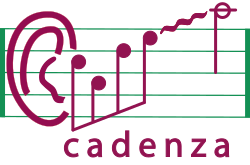We are organising a series of machine learning challenges to enhance hearing-aid signal processing and to better predict how people perceive speech-in-noise (Clarity) and speech-in-music (Cadenza). For further details of the Clarity Project visit the Clarity project website, and for details of our latest Clarity challenges visit our challenge documentation site. You can contact the Clarity Team by email at claritychallengecontact@gmail.com. For further details of the Cadenza Project visit the Cadenza project website, and to find out about the latest Cadenza challenges join the Cadenza Challenge Group.
In this repository, you will find code to support all Clarity and Cadenza Challenges, including baselines, toolkits, and systems from participants. We encourage you to make your system/model open source and contribute to this repository.
- The 2nd Clarity Enhancement Challenge (CEC2) Online Workshop - December 12th - Register Now!🔥🔥🔥
- The ICASSP 2023 Clarity Challenge - Open Now visit the website for details on how to take part. Closing Feb 8th.
Clarity is available on the Python Package Index (PyPI) to install create and/or
activate a virtual environment and then use pip to install.
conda create --name clarity python=3.8
conda activate clarity
pip install pyclarity# First clone the repo
git clone https://github.com/claritychallenge/clarity.git
cd clarity
# Second create & activate environment with conda, see https://docs.conda.io/projects/conda/en/latest/user-guide/install/index.html
conda create --name clarity python=3.8
conda activate clarity
# Last install with pip
pip install -e .Alternatively pip allows you to install packages from GitHub sources directly. The following will install the current
main branch.
pip install -e git+https://github.com/claritychallenge/clarity.git@mainCurrent challenge(s)
Upcoming challenges
- The first Cadenza Challenge will launch Spring 2023. Join the Cadenza Challenge Group to keep up-to-date on developments.
- The 2nd Clarity Prediction Challenge is due to launch in February 2023.
Previous challenges
We provide also a number of tools in this repository:
- Hearing loss simulation
- Cambridge MSBG hearing loss simulator: descriptions can be found in the CEC1
description; an usage example can be found in the CEC1 baseline
evaluation script
evaluate.py.
- Cambridge MSBG hearing loss simulator: descriptions can be found in the CEC1
description; an usage example can be found in the CEC1 baseline
evaluation script
- Objective intelligibility measurement
- Modified binaural STOI (MBSTOI): a Python implementation of MBSTOI. It is jointly used with the MSBG hearing loss model in the CEC1 baseline. The official matlab implementation can be found here: http://ah-andersen.net/code/
- Hearing-aid speech perception index (HASPI): a Python implementation of HASPI Version 2, and the better-ear HASPI for binaural speech signals. For official matlab implementation, request here: https://www.colorado.edu/lab/hearlab/resources
- Hearing-aid speech quality index (HASQI): a Python implementation of HASQI Version 2, and the better-ear HASQI for binaural speech signals.
- Hearing-aid audio quality index (HAAQI): a Python implementation of HAAQI.
- Hearing aid enhancement
- Cambridge hearing aid fitting (CAMFIT): a Python implementation of CAMFIT, translated from the HörTech Open Master Hearing Aid (OpenMHA); the CAMFIT is used together with OpenMHA enhancement as the CEC1 baseline, see
enhance.py. - NAL-R hearing aid fitting: a Python implementation of NAL-R prescription fitting. It is used as the CEC2 baseline, see
enhance.py.
- Cambridge hearing aid fitting (CAMFIT): a Python implementation of CAMFIT, translated from the HörTech Open Master Hearing Aid (OpenMHA); the CAMFIT is used together with OpenMHA enhancement as the CEC1 baseline, see
In addition, differentiable approximation to some tools are provided:
- Differentiable MSBG hearing loss model. See also the BUT implementation: https://github.com/BUTSpeechFIT/torch_msbg_mbstoi
- Differentiable HASPI (coming)
- CPC1:
- CEC1:





